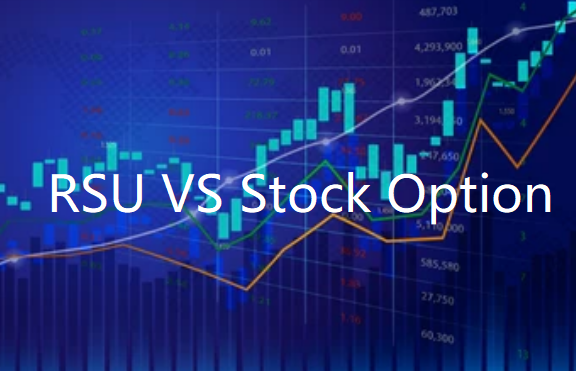
Alina Haynes
Aug 10, 2022 17:47

How does Twitter make money by offerring a free service? Here is a comprehensive analysis of their three revenue sources, the various products and services they offer, Twitter's business model, their year-over-year revenue, and how Twitter operates.
Twitter (TWTR), a social media firm created in 2006, is now pervasive on the Internet and in all forms of media through its tweets. It is best known for tweets from politicians and celebrities that break the news. However, it also gives a forum for millions of people to publish their opinions, interact, exchange material, and read breaking news. Everyone, even businesses, can use the platform at no cost. Once a user has made an account, they can send messages ("tweets") of up to 280 characters and up to 2,400 times each day, which are immediately delivered to their followers in a continuously updated feed.
Most of Twitter's revenue comes from selling advertising services, while data licensing and other services make up the remainder.
Other social media businesses such as Facebook's parent company Meta Platforms Inc. (META), Google and YouTube's parent company Alphabet Inc. (GOOG), Snap Inc. (SNAP), and others are Twitter's primary competitors.
More than 217 million individuals worldwide utilize Twitter's social network. The site includes content in every category, with a few notable exclusions.
In recent years, Twitter has been scrutinized for removing users with ideas disagreeing with its management. Many outspoken pundits from the center and right of the political spectrum were shadow banned or de-platformed entirely. The most infamous ban occurred in January 2021, when Twitter banned the sitting president of the United States, Donald Trump.
Once, Twitter promised to be a sanctuary for free speech. Numerous political commentators recognize, however, that it heavily restricts any narratives or ideas that its community guideline teams oppose.
In February, Twitter released financial figures for its fiscal year (FY) ending December 31, 2021. The company's net loss shrunk to $221,4 million from $1,1 billion in the prior year. To $5.1 billion, annual revenue increased 36.6% year-over-year (YOY). Twitter's costs and expenses increased faster than its revenue and included a $765.7 million litigation-related one-time charge.
Most of Twitter's revenue is generated from selling advertising space on its site to worldwide advertisers. To attract advertisers, its user base must be vast and increasing. Twitter's user base is quantified by a metric known as monetizable daily active users (MDA), which is shorthand for the total number of daily logins and page views. Average monthly active users on Twitter increased by over 13% year over year, reaching 217 million in the fourth quarter of fiscal year 2021.
Advertising services accounted for approximately 89% of Twitter's income in FY 2021, or $4.5 billion. The segment's revenue increased by 40.5% over FY 2020. Twitter makes the majority of its advertising revenue from the sale of promoted products to marketers, such as Promoted Ads and Twitter Amplify, Follower Ads, and Twitter Takeover.
The company uses an algorithm to generate customized advertising opportunities by ensuring that advertised products appear in the appropriate users' timelines, search results, profile pages, and Tweet conversations. Advertisers can target audiences based on various variables, and Twitter offers advertisers the means to establish and expand an audience interested in their products or services. Advertisers may also pay to have their advertisements appear at the top of the hot topics list or timeline.
While most of its advertising revenue is made through Twitter's owned and operated platform, a tiny fraction of the advertising products Twitter sells is also put on third-party publishers' websites, applications, and other offerings.
Typically, only tweets from Twitter profiles that a user follows will appear in his or her timeline. Promoted tweets are an obvious exception to this rule, and Twitter will inject a promotional tweet into users' timelines for a charge. These users can be targeted based on their demographics, geography, the profiles they follow, and the device they are using. Promoted tweets are identified as such in the timelines of users.
For instance, Samsung may promote one of its new smartphones using a tweet. For this effort, it may target iPhone-using individuals in the United States who already follow similar tech businesses and who are viewing tweets on an iPhone.
Companies often do not pay Twitter a flat charge for this service, and they may pay according to the amount of 'clicks or retweets a promotional tweet receives. This is comparable to numerous other forms of user-based web advertising.
Additionally, businesses can pay Twitter to advertise their Twitter profiles to attract more followers. When users log into their Twitter accounts, they are typically presented with several profiles they may like to follow. These recommendations are typically created by an algorithm that considers shared demographic information or whether or not two profiles follow the same individuals. When a corporation bids to have its Twitter profile promoted, it will appear as one of these options to the targeted users.
Along the sidebar of Twitter, the website is a list of hot topics currently being discussed. These might or might not take the shape of a hashtag. These trending topics can give viewers a sense of which stories and news items are currently generating "buzz" on the web. A firm can pay to have a fad promoted for a specified period. For example, the National Football League (NFL) may pay to promote #SuperBowl during the annual championship game.
In addition to promoted tweets, promoted profiles, and promoted trends, Twitter also licenses the publicly accessible data it collects from its more than 230 million users. This information is known as the firehose.
DataSift, BuzzFinder, and Gnip are companies with access to the firehose. These organizations employ advanced analysis to harvest relevant data for their clients interested in identifying consumer trends or gaining a more comprehensive understanding of brand opinion.
The analysis of data from a firehose can get highly complex. In an interview with BBC News, DataSift founder Nick Halstead stated, "U.S. football teams would analyze the popularity of players by region to determine how much of a specific football top to purchase to stock stores.
Twitter introduced its first subscription service, Twitter Blue, on June 3, 2021. It is being rolled out and tested in Australia and Canada at present.
Twitter Blue customers have access to bookmark folders, the ability to undo tweets, reader mode, and customizable app icons for their device's home screen. In addition, subscribers will have access to dedicated customer service.
Over 11% of Twitter's fiscal year 2021 revenue, or $571,8 million, was generated from data licensing and other sources. The segment's revenue increased by 12.3% compared to the previous year. Twitter also sells data licenses that allow its data partners to access and analyze historical and real-time data on its platform. Twitter takes service fees from MoPub users as part of its "other sources" category. On January 1, 2022, Twitter completed the sale of its MoPub company.
MoPub-generated service fees are another source of revenue for Twitter. MoPub is Twitter's platform for publishing mobile applications, and it is used to buy and sell advertising inventory for mobile apps. Twitter earns a service fee for each transaction conducted on MoPub.
On April 25, 2022, Elon Musk, founder and CEO of Tesla Inc. and the world's richest person, announced that he would be purchasing Twitter for $44 billion. The transaction is expected to take place later in 2022, at which point the corporation will change ownership to private hands. Twitter stockholders will receive $54.20 in cash for each share they own. On April 1st, Musk revealed that he had purchased a 9.2% stake in Twitter. On April 4, Musk was appointed to serve as a class II director on Twitter's board of directors. However, he later resigned and revealed his intention to acquire the company. On April 14, the billionaire offered to acquire Twitter for $43 billion. On April 15, Twitter's board established a shareholder rights plan with a limited term, also known as a "poison pill," in an apparent effort to thwart Musk's takeover. On April 25, however, the company's board reversed direction and accepted Musk's bid. The purchase is contingent on Twitter stockholder approval and regulatory approvals.
As previously stated, Twitter completed the sale of MoPub on January 1, 2022. AppLovin Corp. purchased the mobile ad exchange business for less than $1.1 billion in cash. Twitter has announced that the MoPub platform, including its network mediation, Advanced Bidding, and Marketplace services, will be discontinued on March 31, 2022. MoPub Dashboard and Reporting will remain accessible until April 8, 2022.
As part of our effort to raise awareness of the importance of diversity in the workplace, we provide investors with a peek at Twitter's dedication to diversity, inclusivity, and social responsibility. We analyzed the data Twitter publishes to demonstrate how it reports the diversity of its board and staff to assist readers in making informed investment and purchasing decisions.
Elon Musk stated in April 2022 that he had obtained the cash to acquire Twitter and take the firm private.
Leftist media figures and the Twitter board viewed this as a threat by Elon Musk, with the possibility of the billionaire seizing control of the company and reinstating it as a free speech platform.
Musk initially proposed purchasing the firm for $54.20 per share. Twitter implemented a "poison pill" approach to prevent the billionaire from acquiring the platform and seizing control of the firm. However, that was unsuccessful, and musk made an irresistible offer and purchased the entire firm for $44 billion.
In time, Musk's plans for the corporation will become evident. Musk may make the blue check available to everyone for a small monthly charge, contrary to the widespread belief that it is reserved for the elite. This would not only produce a new and considerable cash stream for the corporation but also aid in resolving its spambot issue.
Twitter might pursue a variety of different avenues for growth, such as charging a fee for users who sell products or services on the platform. However, to thrive in the face of increasing competition, it must mend its somewhat toxic image and increase user engagement.
Twitter competes with similar social media programs such as Parler, Telegram, Gab, Gettr, MeWe, and former President Trump's Truth Social, all of which promise users better freedom of expression and anonymity. Recently, both Tiktok and Discord have experienced explosive growth.
New challengers to Twitter have emerged in the wake of the censorious response of the mainstream media and big tech to non-heterodox theories about Covid-19, its genesis, and the safety of vaccinations, and the discussion about Hunter Biden's laptop in the run-up to the 2020 presidential election. Even though several apps have attempted to imitate the Twitter concept, few have been able to achieve market share sustainably.
Despite producing $665 million in total revenue in 2013, a 110% year-over-year gain, Twitter had a net loss of $645 million in 2013. Twitter is not yet profitable, even though its revenue numbers continue to rise and the microblogging site continues to explore further monetization alternatives. This may alter within the next few years.
Twitter is currently one of the largest and most popular online social media networks. Registration and use of Twitter are free. This begs the question of how Twitter generates revenue. Twitter generates revenue through internal advertising, data licensing, and MoPub. Thus, Twitter's advertising consists of promoted tweets, promoted accounts, and promoted trends, which provide the majority of the company's revenue. Although Twitter's primary source of money is not the sale of user-generated data, the business of data licensing is expanding. Consequently, despite the public's privacy worries around the sale of user data, Twitter will likely continue to offer Data licensing and potentially increase its revenue through this channel.

Aug 09, 2022 14:40

Aug 11, 2022 14:44